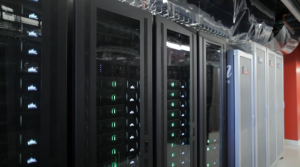Microsoft’s Azure AI Foundry unifies AI development so everyone can get involved
Microsoft Corp. said today it wants to change the game for artificial intelligence development by providing everyone with the tools to implement cutting-edge AI capabilities within their business applications, and key to this is the launch of the new Azure AI Foundry.
It’s a brand-new offering announced at Microsoft Ignite 2024 that’s meant to simplify the development and management of AI applications. It does this by “unifying the AI toolchain” within a new Azure AI Foundry software development kit that brings Azure AI capabilities to familiar developer tools such as GitHub and Visual Studio.
The idea with Azure AI Foundry is that everyone within an organization – not just developers and AI engineers, but also information technology professionals and even regular workers – will be able to customize, host, run and manage AI with more confidence, so everyone can play a part in driving AI-powered innovation. Developers will benefit from more streamlined access to Microsoft’s latest AI development innovations, while business leaders and IT pros will gain access to tools that provide more insights into the impact of AI on their business, the company said.
Streamlined AI agents
Azure AI Foundry unifies all of the capabilities found within the existing Azure AI Studio with various new tools and services, including AI Agent Service, which is a new platform for creating “AI agents” that can perform tasks on behalf of human workers with minimal supervision.
AI agents are all the rage these days, with companies such as Salesforce Inc. and ServiceNow Inc. racing ahead in their development, providing tools that can automate customer service requests and marketing outreach, for instance.
Microsoft wants to help customers build even more advanced AI agents to automate yet more business processes. They’ll be able to do this using AI Agent Service, which makes it easy to connect enterprise data sources like Microsoft Fabric and Microsoft SharePoint to new agents to ensure they’re grounded in corporate knowledge. It also supports private networking and bring-your-own storage, ensuring data privacy and compliance for sensitive data.
In addition to building AI agents, Microsoft Azure AI Foundry will also make it easier to monitor their performance with a new management center experience that brings key subscription information, such as connected resources, quota usage and access privileges, for each model, into a single pane of glass.

More AI models
To build AI agents, teams will need access to the most powerful AI models, and Microsoft is ensuring that with an expanded catalog that contains the latest large language models from companies like OpenAI, plus its own Phi family of small language models. It’s also packed with various open-source and frontier models, including new ones from companies such as Bria Artificial Intelligence Ltd., NTT Data Corp. and Gretel Labs Inc.
In addition, there are new industry-specific LLMs from companies like Bayer AG, Sight Machine Inc. and Paige.ai Inc., among others. And there’s a new serverless provisioned deployment option for “models-as-a-service”-based models from companies like Meta Platforms Inc., Mistral AI, Hugging Face Inc. and Cohere Inc.
Customers will also be able to better fine-tune those new models, with new capabilities from partners like OpenAI that enable vision fine-tuning and distillation, which paves the way for smaller models like GPT-4o mini or Phi to replicate the behavior of much larger LLMs, so users can create powerful AI applications with a much smaller footprint.
Microsoft Azure AI Foundry also provides access to an expanded library of tools for evaluating and benchmarking these models, plus a unified model inference application programming interface, which makes it simpler to experiment with and compare various models. Using this, it becomes possible to more easily swap out models in existing AI applications, so they can be improved over time.
Finally, there are new customization tools from providers including Gretel Labs, Weights & Biases Co. and Scale AI Inc., the company said.
Enhanced RAG, vector search and more
Microsoft’s retrieval-augmented generation or RAG capabilities are getting a boost too. RAG is the technique that’s used to funnel proprietary data to pretrained LLMs and SLMs so they can come up with more precise, up to date and contextual responses to questions. So a customer service chatbot can be linked to a company’s internal knowledge base to better answer questions about their product return policy, for example.
The Azure AI Search platform, which provides these RAG capabilities, now has a generative query engine available in select Azure regions to enhance performance, while Query Rewriting is a new capability in preview that’s able to create multiple versions of a user’s query to provide better responses. There’s a new semantic ranker tool as well, which helps to rank those responses.
Microsoft reckons these updates provide up to 12.5% better relevance, with responses delivered 2.3 times faster than before, translating to more responsive and more capable RAG-based AI models.
Other new features found in the Azure AI Foundry include more advanced vector search and RAG capabilities in Azure Databases and GitHub Models, plus a preview of GraphRAG in Azure Database for PostgreSQL for private datasets. Then there’s DiskANN, a new suite of algorithms for vector search available now in Azure Cosmos DB and in preview for Azure Database.
There are additional responsible AI tools too, centered on AI reports and risk and safety evaluations for AI-generated images, to improve safety and compliance. Collaborations with Credo AI Inc. and Saidot Inc. give customers access to comprehensive AI governance platforms, Microsoft said.
Additionally, Microsoft unveiled a new tool called Azure AI Content Understanding that can help developers to create cost-effective multimodal applications that understand text, audio, images and video inputs. Finally, the company lifted the lid on Azure Container Apps serverless graphics processing units, a new deployment option for serverless infrastructures.
Making AI possible
In a blog post, Jessica Hawk, Microsoft’s corporate vice president of data, AI and digital applications, said the innovations in Azure AI Foundry will help more companies to get started in AI at a time when many continue to struggle to do so.
She cites data from Deloitte Touche Ltd., which shows that 70% of organizations have only been able to move 30% or less of their generative AI experiments into production due to the difficulties involved. She cites data from Deloitte Touche Ltd., which shows that 70% of organizations have moved 30% or less of their generative AI experiments into production.
It’s for this reason that Azure AI Foundry comes with comprehensive guidance for AI adoption and architectures within Azure Essentials — essentially, all of Microsoft’s best practices, product experiences, reference architectures and other resources, in a single portal.
“As AI transforms industries and unveils new opportunities, we’re committed to providing practical solutions and powerful innovation to empower you to thrive in this evolving landscape,” Hawk said. “Everything we’re delivering today reflects our dedication to meeting the real-world needs of both developers and business leaders, ensuring every person and every organization can harness the transformative power of AI.”
Featured image: SiliconANGLE/Freepik AI
A message from John Furrier, co-founder of SiliconANGLE:
Your vote of support is important to us and it helps us keep the content FREE.
One click below supports our mission to provide free, deep, and relevant content.
Join our community on YouTube
Join the community that includes more than 15,000 #CubeAlumni experts, including Amazon.com CEO Andy Jassy, Dell Technologies founder and CEO Michael Dell, Intel CEO Pat Gelsinger, and many more luminaries and experts.
THANK YOU











